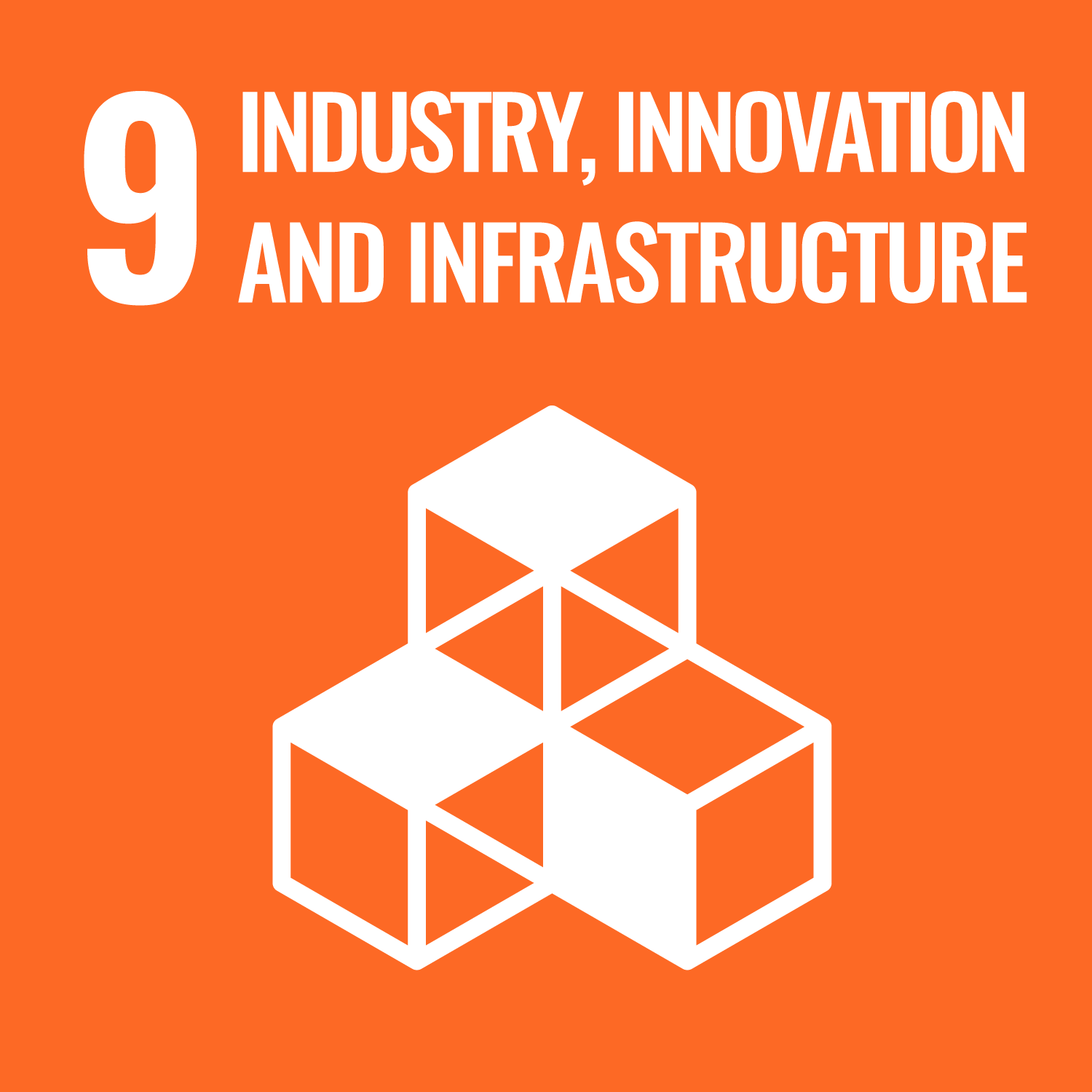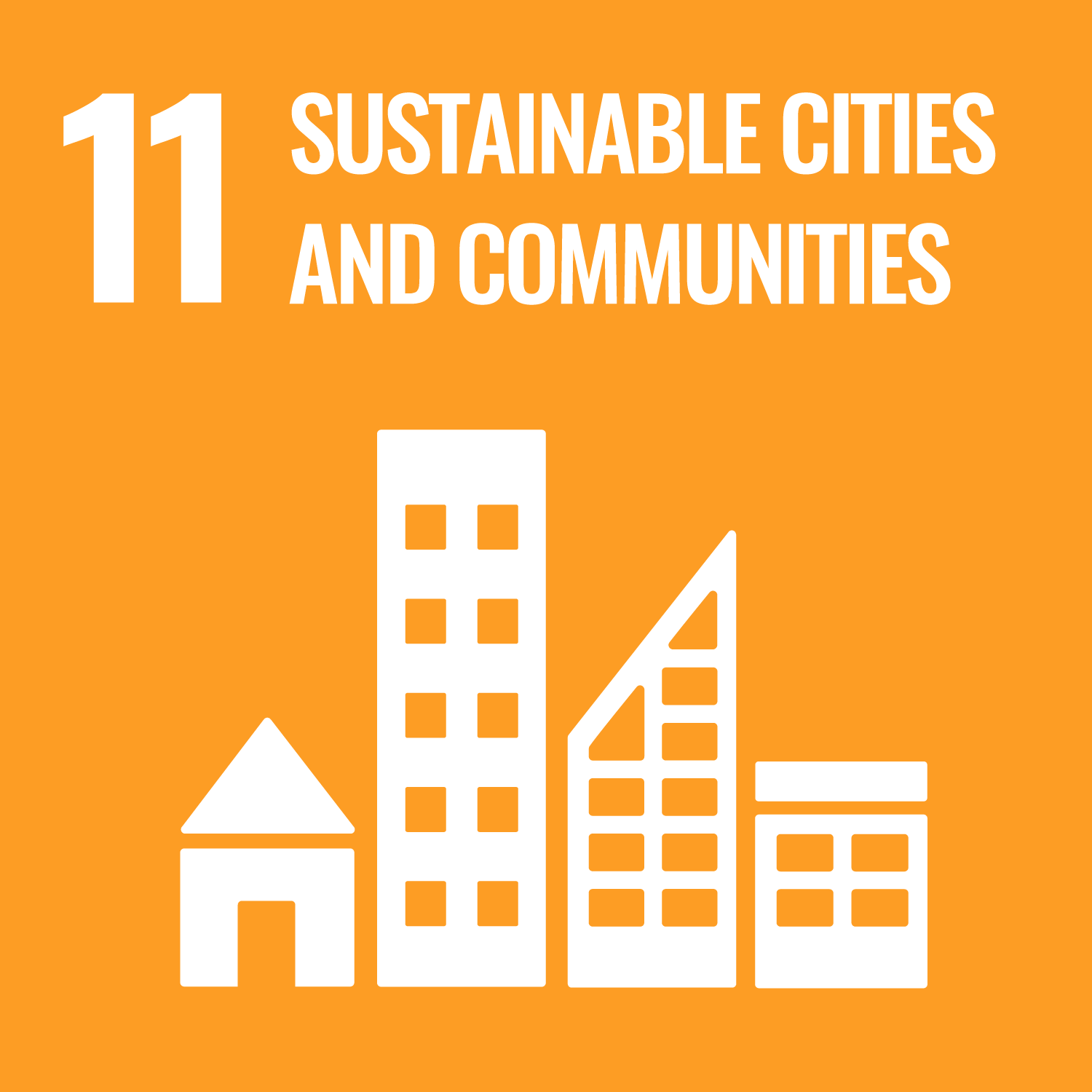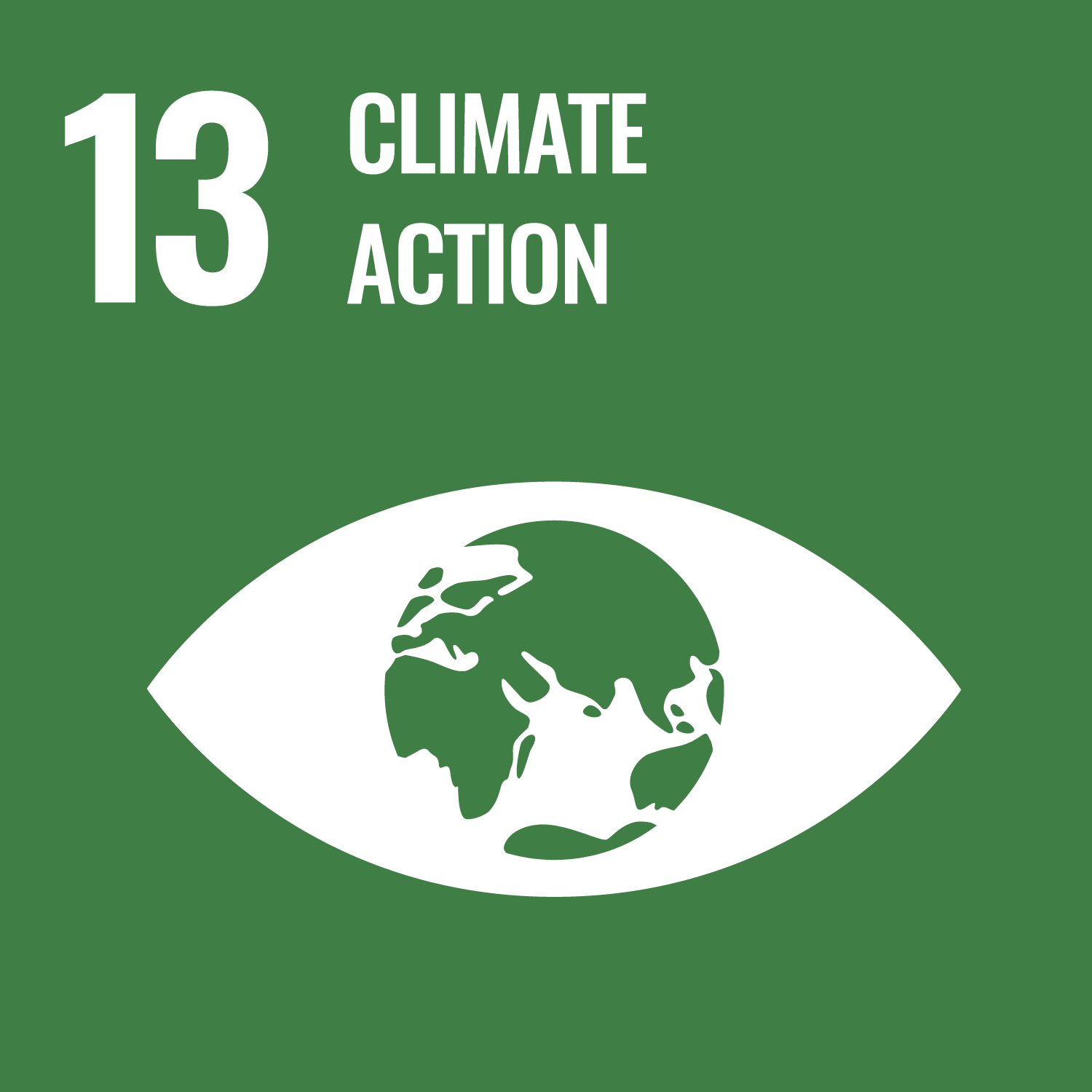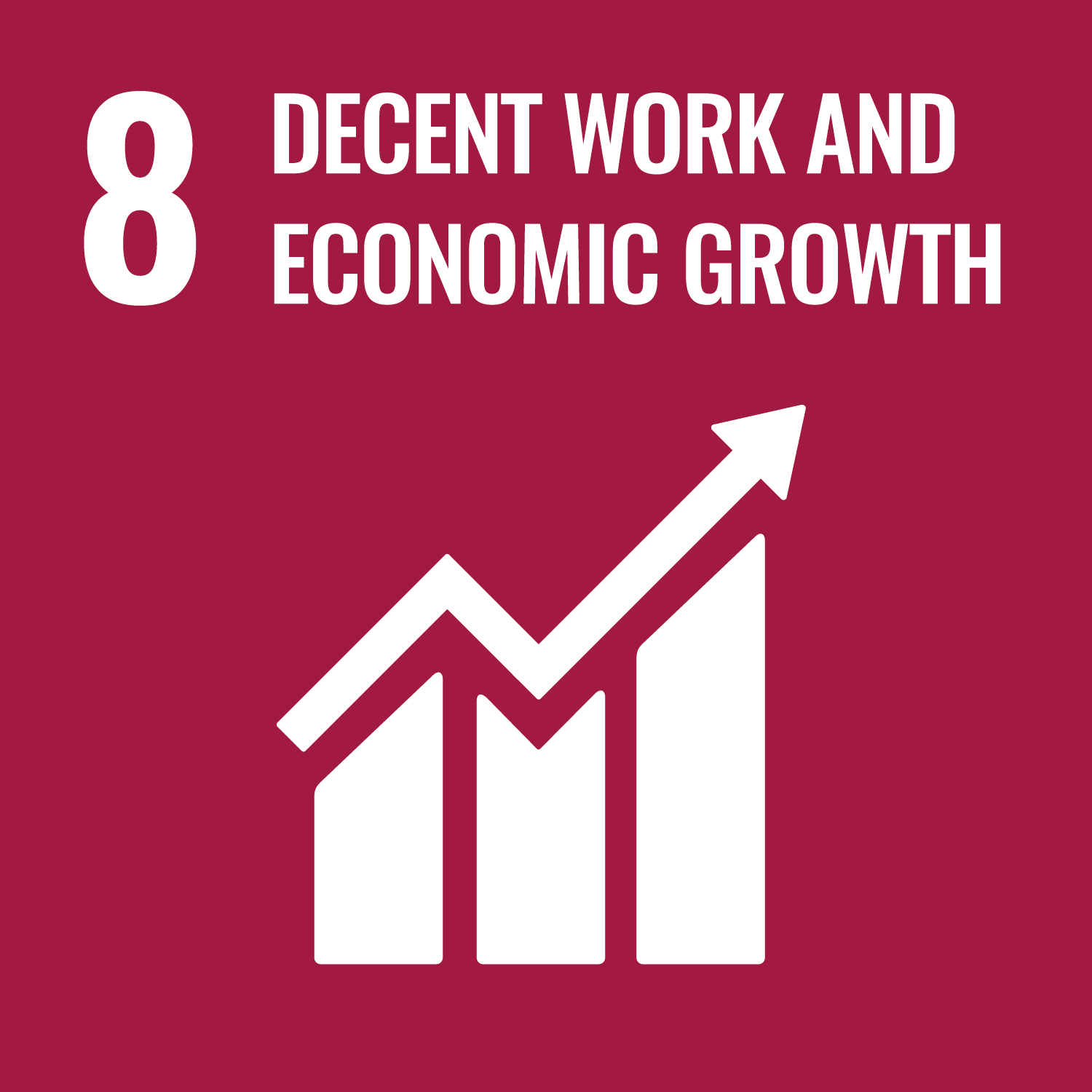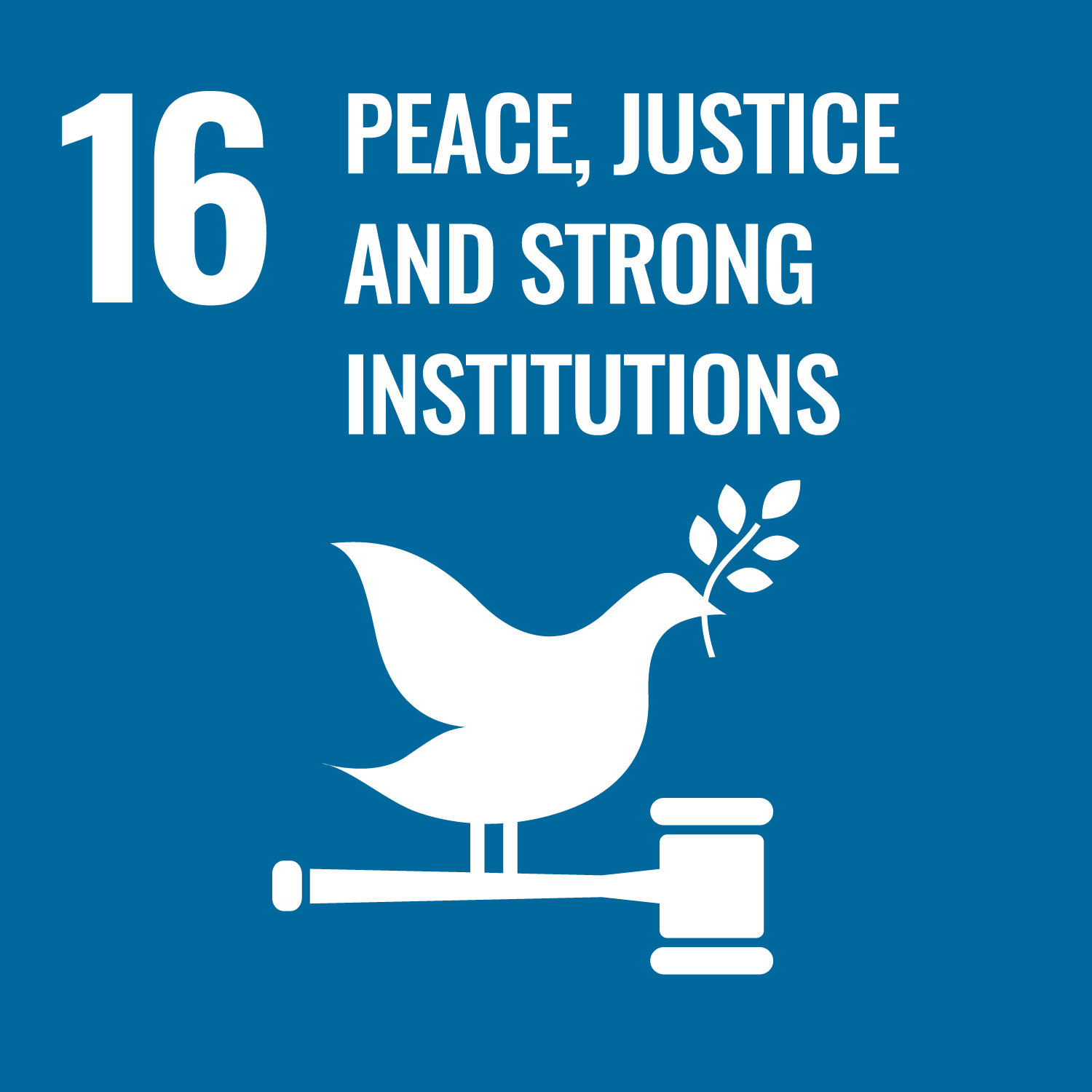
Sustainability report 2021

Sustainability report
1. Business model
Lehto is a forerunner of a better tomorrow. We are driven by the need to be ahead of our time and reinvent the construction industry – and in this way to generate value, a better tomorrow for our customers: high-quality, affordably-priced, fast and ecological construction. We create ingenious homes, successful business premises, functional care homes and schools, and carry out effortless pipeline renovations. The key competitive elements that enhance productivity are design management, repeatable solutions, industrial production and harnessing digitalisation. Lehto’s goal is to build efficiently and save resources, and to reduce the material waste generated in construction.
The company operates in two service areas: Housing and Business Premises. Lehto has factories in four municipalities. They produce large roof elements, wall elements, bathroom and kitchen modules, housing modules, building technology centres, renovation elements, doors and windows, and fixtures. The largest units are located in Oulainen and Hartola. All of our factories are located in Finland, and the bulk of our outsourcing is contracted in Finland and the European Union.
Thanks to our efficient factory construction, Lehto Group is able to reduce building and housing costs and offer people reasonably priced homes with excellent travel connections – even in growth centres. 1 277 new housing units and 18 new business premises were completed in 2021.
In 2021, Lehto had 1,043 employees on average. The number of employees declined by 72 largely due to changes in the business environment. Although the number of employees remained fairly stable during the report year at just over 1,000, total turnover was 23.6% (2020: 20.2%). At the end of the year, there were 1,042 active employees, of whom 878 (84.3%) were men and 164 women (15.7%). The share of all employees accounted for by blue collar workers rose slightly (47.3%/493) in relation to the number of white collar employees (52.7%/549). Employees in permanent employment relationships accounted for 94.4 per cent (984) of personnel. Subcontracting and hired resources are also used at construction sites for specific work phases and for short-term, urgent work. Those in fixed-term employment (5.6%/58) were mainly trainees as part of their education or substitutes, or engaged in project work or other agreed-upon temporary tasks.
2. 2021 highlights
LEED Gold for Bredis
Lehto built an extension to the Bredis Retail Park, and it received a LEED Gold certificate in 2021.
Fair play in annual contracts
Fair Play Rules are now included in all annual contracts, that is, our 100% target has been achieved.
100 accident-free days for Lehto Housing
On 22 March 2021, a milestone of 100 accident-free days was achieved by those working in the Lehto Housing service area.
Pedalling to success in the Kilometre Contest
Every summer, Lehto takes part in the lighthearted Kilometre Contest (Kilometrikisa) in which companies form a team and attempt to rack up kilometres on their bikes. The Lehto team pedalled their way to an astounding total of 17,688 kilometres, thereby saving 1,238 litres of petrol and 3,095 kg of carbon dioxide.
Lehto is a member of the Green Building Council Finland
In 2021, Lehto was a member of the Green Building Council Finland and a number of its committees. The FIGBC is an extensive cooperation network that aims to integrate new solutions into the property and construction sectors, that is, carbon-neutral, circular-economy solutions that support a sustainable lifestyle.
Kulomäki wooden apartment building area
In Kulomäki, Lehto has built a small “village” consisting of wooden-framed, low-rise apartment buildings. The area has fourteen two-storey buildings and a shared sauna. The construction method used in Kulomäki represents Lehto’s well-honed factory prefabrication. All of the apartments in the Kulomäki buildings were manufactured at Lehto’s factory in Oulainen. At our factory, we can produce and finish the apartments and their bathrooms and kitchens in entirely dry premises, protected from the weather.
Advertising banners recycled
Lehto made use of construction site advertising banners that were otherwise headed for the trash. With the aid of Globe Hope, they were turned into bags for first-aid kits.
Textile processing plant opens
Lehto Tilat built the first textile processing plant in the Nordic countries for Rester Oy. Located in Paimio, it will solve the global environmental problem posed by end-of-life textiles for both companies and consumer textiles. The Paimio plant will convert textile wastes into recycled fibre, particularly for industrial needs. The new premises have been tailored to meet the client’s wishes, and will support the company’s new business and systemic transformation.
3. Lehto Group and the UN’s Sustainable Development Goals
Lehto strives to support the UN’s Sustainable Development Goals. Below, you can read more about how Lehto’s business is linked to the UN’s goals.
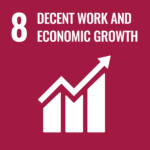
In particular sub-goals 8.2, 8.4 and 8.8
Lehto wants to be a forerunner in building a better tomorrow and innovatively reinventing the construction sector. The key tools in our drive to reinvent the construction industry and improve productivity are strong design management, industrial manufacturing and harnessing digitalisation. By utilising modular construction and other innovations, Lehto aims to make construction faster, more affordable, higher in quality, and more ecological.
Lehto is seeking to run a more resource-efficient business, through both industrial prefabrication and other activities. Construction has many environmental impacts through the value chain associated with manufacturing construction products, and also while buildings are occupied. These can all be influenced through procurement. The life cycle energy consumption of buildings is reduced by making them energy-efficient.
Lehto actively seeks to ensure that its employees have a safe and pleasant working environment. Accident prevention is a top priority. Regular personnel surveys are used to monitor the working environment. Most employment contracts are permanent. Lehto provides its employees with more extensive healthcare services than required by law and, for example, also offers leisure-time accident insurance. Lehto has a career promise for students.
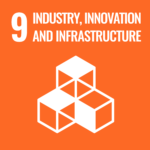
In particular sub-goals 9.1, 9.2 and 9.4
Lehto seeks to produce more affordable housing in new apartment buildings, so that people have the opportunity to live in a good quality new home in a growing urban area – including many of those who can’t afford new housing in more expensive price ranges.
Lehto leverages industrial prefabrication in its construction, and strives for sustainable production at its factories. We directly employ people at our own factories, offices and construction sites, and also provide indirect employment through the products and services we purchase from other companies.
Lehto continually seeks to improve its use of resources. We are always developing our production processes in a more efficient direction, while also reducing their harmful effects on the environment.
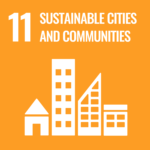
In particular sub-goals 11.1, 11.3 and 11.6.
Lehto wants to provide opportunities for people to live in a safe and more affordable home – including many of those who can’t afford new urban housing in more expensive price ranges.
Lehto’s business is primarily geared towards urbanising areas. We focus our housing construction on locations with good public transport connections.
Lehto seeks to prevent the formation of waste, and we are seeking to reduce the amount and proportion of non-sorted waste.
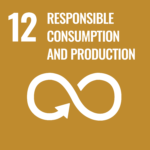
In particular sub-goals 12.2, 12.5 and 12.6
Lehto strives to run its business more efficiently and make more sustainable use of resources by, for example, eliminating waste and using renewable raw materials, such as wood.
The construction sector is a key producer of waste in Finland. In addition to its own waste, Lehto also has the opportunity to influence the waste generated by its subcontractors on construction sites. Over the coming years, Lehto will be actively seeking to increase waste sorting and promote the circular economy. Lehto also raises its customers’ awareness of the environmental impacts of construction projects by, for example, reporting on many sustainability issues.
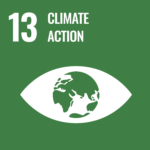
In particular sub-goals 13.1, 13.2. and 13.3.
Lehto seeks to be a forerunner in making the construction sector more climate-proof. The ways we are attempting to achieve this include reducing the carbon footprint of construction, increasing positive climate impacts, and reducing the climate impacts of customers’ premises during occupancy through the use of energy-efficient solutions.
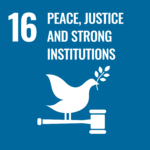
In particular sub-goals 16.5 and 16.6.
Lehto complies with the principles of good governance, and also requires its partners to operate in accordance with the ethical guidelines set out in the Fair Play Rules. Lehto does not accept bribery or corruption. Lehto strives for efficient and responsible operations.
4. Sustainability management and reporting
Responsibility is one of the values that guides Lehto’s operations. Lehto’s goal is to build efficiently while saving energy and resources, to reduce the material waste generated during construction, and to be a good employer that is fair to everyone. The construction sector will play a significant role in curbing climate change, adapting to it, and reducing the use of non-renewable natural resources. Lehto’s aim is to combine smart and sustainable construction with the benefits afforded by digitalisation. For example, Lehto has developed solutions for wood construction that utilise factory production, which is more ecological and resource-efficient than traditional construction.
At Lehto Group, the CEO is ultimately responsible for environmental issues. Responsibility for practical environmental management is assigned as follows: EVPs of the service areas for construction; the factory production manager for factory production; and the Chief Procurement Officer for centralised purchasing. The HR Director is in charge of responsibility issues relating to personnel. The management team monitors trends in the key indicators of responsibility. Sustainability issues are discussed in management teams as part of both routine business management and development.
Lehto is a member of the Green Building Council Finland cooperation network, as we have also wanted to promote sustainable construction solutions through this avenue. In 2021, Lehto was involved in several of Green Building Council Finland’s committees: Low-carbon construction, Carbon-neutral properties, and Communications network.
The Lehto Group monitors sustainability with the aid of three themes that follow an ESG-style breakdown (environment, social and governance). The themes we monitor are: responsible construction, personnel wellbeing, and the responsibility of business practices.
Lehto Group reports to external stakeholders on its responsibility in connection with annual reporting, and our reporting complies with the requirements laid down for non-financial information in the Accounting Act. In this report, the requirements of the Accounting Act are covered in the following sections:
Accounting Act requirement | Location in this report |
Description of the business model | Business Model |
Environmental issues | Responsible construction |
HR issues | Personnel wellbeing |
Social responsibility | Personnel wellbeing |
Anti-corruption activities | Responsibility of business practices |
Human rights | Responsibility of business practices, Personnel wellbeing |
5. Responsible construction
Construction has environmental impacts not only during construction itself, but also indirectly through the manufacture of construction products and the environmental impacts of using a building. Lehto strives to take this environmental, financial and social responsibility into account in its operations (see the sections Personnel wellbeing and Responsibility of business practices). In practice, Lehto’s goal of reducing harmful environmental impacts means taking a lifecycle approach to buildings and structures by employing lower-carbon solutions and ensuring greater material and energy efficiency.
The most significant environmental risks associated with Lehto Group’s business are related to environmental damage and accidents, the climate, and the use of natural resources. In their construction and demolition work, Lehto Group and its subcontractors handle hazardous substances such as coolants, oils, solvents, asbestos and other materials that, if released into the environment, may cause contamination. Environmental damage may also be caused during the handling of hazardous substances, or as a result of errors or negligence in their treatment or disposal. In all of its activities, Lehto seeks to ensure that its business complies with all current environmental legislation. Factories and construction sites have developed practices, guidelines and plans to support the management of environmental risks.
Global environmental challenges
The global environmental challenges that have been most prominently discussed in recent years include climate change, the overconsumption of natural resources, and a loss of biodiversity. These things are all interlinked, so that climate change and the overconsumption of natural resources may, for instance, intensify loss of biodiversity. In the UN’s Convention on Biological Diversity, the key themes for preventing loss of biodiversity have been identified as the protection and restoration of ecosystems; climate change mitigation; action to combat pollution, the spread of invasive species and overconsumption; the production of more sustainable products and services; and a reduction in consumption and waste. Authorities in Finland are already working to take the needs of endangered flora and fauna into account during zoning.
Through its operations, Lehto can have a positive impact in all of these areas from the consumption of natural resources to mitigating and adapting to climate change, producing more sustainable products and services, reducing waste, and promoting the circular economy (which is related to all of the aforementioned).
Climate change
According to a Greenhouse Gas Inventory published by Statistics Finland, almost three quarters of Finland’s annual greenhouse gas emissions are caused by energy production and consumption. Buildings are major consumers of energy. According to an estimate by the Ministry of the Environment, the built environment causes about a third of Finland’s greenhouse gas emissions when indirect emissions are also taken into account. Emissions from buildings are often assessed as a lifecycle carbon footprint, which is determined by taking into account the manufacture of their construction materials, construction itself, and emissions from the building’s occupancy phase and demolition. Buildings use energy, and the emissions that are caused by its production have also been classed as emissions from the built environment. Both the State and many municipalities are employing measures to promote lower-carbon construction.
Lehto’s climate risks
Lehto’s climate risks can be considered to include changes in thermal loads, and extreme weather conditions that may impact the operational capacity of construction sites. Climate risks are also political risks, through factors such as legislative amendments that may be made at short notice; fluctuations in the prices of energy, transport and raw materials due to potential changes in emissions requirements or taxation linked to climate impacts; and changes in customers’, financiers’ or stakeholders’ behaviour with respect to the climate. Changes in how the greenhouse gas emissions of construction projects are calculated can also be considered a climate risk of sorts, that is, if these changes have an impact on what kind of buildings will actually get built. Finland has also been preparing legislation in this area. Climate perspectives may also be reflected in zoning.
Mitigating climate change
For Lehto, there are also favourable business opportunities associated with mitigating and adapting to climate change. Lehto’s way of building – with its integrated technical solutions and operating methods – aims for more resource-wise solutions and a reduction in construction material waste. For example, factory prefabrication has enabled more widespread use of cut-to-size construction products and more efficient logistics. Circular economy principles are also easier to apply during indoor manufacturing at factories. One practical example of this is that we return offcuts of certain construction materials to the manufacturer for reuse. Promoting the reuse of materials can also help to reduce the consumption of natural resources. Wood-based materials, such as the timber used in Lehto’s wooden apartment buildings, can act as carbon sinks. By making buildings more energy efficient, we can also reduce the need to use natural resources while a building is in use. Lehto’s pipeline renovation projects can improve the energy efficiency of existing building stock, while also reducing customers’ emissions during their later use of the property.
Lehto calculated the greenhouse gas emissions of some of its construction projects in 2021. These were examined with respect to both product-linked and use stage emissions. Making emission calculations for construction projects is becoming more commonplace.
Development in 2021
In winter 2020–21, Lehto Tilat conducted a survey among real estate investors in collaboration with a firm of consultants. The survey covered product development relating to Lehto’s business premises construction, and was answered by 30 of Finland’s leading real estate investors. No less than 80 per cent of respondents expected better consideration of environmental perspectives in construction, and also said they would be putting greater emphasis on environmental perspectives in future real estate acquisitions. Environmental perspectives emerged as the third most important factor in deciding on prospective investments (after location and anchor tenants’ capacity to pay rent).
Key indicators for responsible construction
As in previous years, Lehto’s key indicators for responsible construction include the waste recycling rate and the proportion of electricity accounted for by renewable energy sources. In 2021, the proportion of electricity accounted for by renewable energy sources was 90.7% (2020: 75.2%). The waste recycling rate rose in 2021 and was 29.3% (2020: 20.7%). The target for waste recycling was not met. The calculations for waste indicators do not include contaminated soil that has been left on some acquired plots by the previous owner, and which was later treated. The waste sorting rate for 2021 was 54.5%. In 2021, we started developing measures for monitoring waste, and 2022 will see the launch of a programme aimed at promoting circular economy practices and reducing construction and mixed waste.
This responsibility report includes more indicators than in previous years. One of the new indicators is the number of startups of wooden-frame housing. This number grew compared with previous years. A total of 375 housing units with wooden frames were started up (2020: 199).
6. Personnel wellbeing
Employees are the most important asset for Lehto Group’s strategy. Which is why we seek to ensure that our employees have the best possible workplace experience, by ensuring that everyday life runs smoothly in a pleasant atmosphere in which everyone knows what they should be doing.
Our HR and training plan and our equality and non-discrimination plan are both based on Lehto’s strategy and take into account any changes occurring in the Group’s operations that may have an effect on the structure, number and professional skills of Lehto personnel.
Cyclical changes in the need for labour, which are typical of the construction sector, were not significantly reflected in our personnel volumes during the year. In 2021, there was practically no increase or decrease in the workforce resulting from business cycles. Recruitment clearly focused on replacement hires and the variation in the number of personnel has been low. Depending on the month, Lehto employed between 1,018 and 1,079 people.
Personnel survey
Lehto carried out a personnel survey at the turn of August and September. This survey was a continuation to the surveys conducted in 2018 and 2020. The results highlight personnel’s confidence in the decision-making ability of senior management, that personnel feel their work makes an important contribution to the company, and that general working conditions are perceived to be good. One key area for development was also identified, that is, enhancing cooperation between units. The overall index for the personnel survey (PeoplePower classification) improved slightly on the previous year with a score of 68.9 (2020: 67.4).
During the year, Lehto participated in a thesis study on the workplace experiences of millennials. The results of this study will be used to further improve personnel satisfaction and engagement.
Coronavirus pandemic
The coronavirus pandemic continued throughout 2021, and was managed with the aid of a continually updated set of coronavirus-related pages on the intranet and construction site letters on the topic of occupational safety. HR has been responsible for guidance at offices, and the occupational safety organisation for guidance on construction sites. HR management has coordinated things as a whole.
Up to and during the summer, Lehto’s offices followed official guidelines and implemented an extensive remote work recommendation, a mask recommendation, and measures to ensure good hygiene. Construction operations were safeguarded using a number of protective measures, such as enhanced hygiene at on-site premises, rotating shifts of remote/in-person work for site supervisors, limiting site visits to only necessary steering and official visits, and staggering breaks, lunch breaks and the use of staff facilities.
Hybrid work
Preparations for switching to hybrid work at offices were made in May–June, and personnel were involved in this through an extensive survey. A set of hybrid work guidelines were drawn up for the Group on the basis of these results and professional recommendations. These guidelines are built around an assessment of team-specific needs and opportunities for remote/in-person work. The core of the operating model has been 2–3 days of remote work and 2–3 days of in-person work per week, with each team also having the potential to react to changing situations. All Lehto supervisors received training in the basic principles of the operating model and how to apply them. The model was then introduced in late autumn when the extensive remote work recommendation ended. In late 2021, the operating model was applied regionally in accordance with official regulations/recommendations.
In spite of these precautions, a total of 197 coronavirus cases were detected at Lehto’s offices, construction sites and factories during the year. Of these cases, 31 were Lehto’s own personnel and 166 were subcontractors’ employees. The majority of cases occurred on construction sites. Those who were infected or exposed were placed in quarantine.
Construction sites in the capital city region were most severely impacted by coronavirus-related issues in early 2021. One construction site was forced to close temporarily in order to stop further infections, while cases and quarantines caused delays at several sites. Although isolated cases were detected at factories and construction sites in late 2021, the virus was prevented from spreading and its adverse effects were limited.
Enhancing occupational safety a priority
The accident rate is one of Lehto Group’s key indicators for responsibility and the most important indicator for HR issues, social responsibility and human rights. Lehto Group prioritised occupational safety as a special focal area in 2017 and has continued efforts to improve safety.
Lehto has three employees who work full time on maintaining and developing occupational safety. The Group’s objective is that every day is an accident-free day, and construction sites and factories are orderly and safe. In 2021, the Group’s accident rate was 15 (LTI1 index, 2020: 23). Since 2018, the accident rate has been measured using the LTI1 index (accidents leading to absence from work of more than one day per million hours worked) and this indicator is reported in connection with annual reporting.
Our policy is that all employees in production-related work must have a valid Occupational Safety Card. In addition, the Group arranges training on occupational safety and first aid. Through preventive measures and training, Lehto Group seeks to prevent accidents at work and influence employees’ attitudes.
Safety park training sessions are a permanent part of the development of the Group-wide safety culture. Lehto Group Plc is a partner of the Safety Training Park in Northern Finland. In addition to safety park tours, safety card training was organised for Lehto personnel at the safety park in 2021. Safety issues are also an integral part of Lehto’s training programme in construction site management.
Safety actions in everyday life
A safety kick-off meeting is held for personnel whenever a new site opens. The occupational safety team will also carry out on-site inspections during the project. In addition to these measures, Lehto actively raises its employees’ awareness of occupational safety issues with its annual clock for safety at work. The clock has a monthly theme suited to each season, and the associated materials will be distributed in both online channels and on-site breakrooms. A report on the previous month’s accidents and safety events will also be given in conjunction with the monthly theme. Safety briefings form part of Lehto’s everyday on-site safety activities. These meetings go through accidents and near-miss situations, and site cleanliness and tidiness are also discussed.
In line with Lehto’s principles for safety at work, all personnel will be informed about larger accidents. At the same time, safety guidelines relating to the accident will be revised for use at both factories and construction sites. A report on each accident/dangerous situation is written within three days of the incident and all of these cases are reviewed with the persons involved. Lehto seeks to identify the root causes of all accidents and dangerous situations, and to find corrective measures to avoid such incidents in the future.
Group´s accident rate in 2021
Personnel competence development
Lehto Group’s HR and training plan is based on the company’s strategy. It serves as the basis for human resource planning, and steers the maintenance and development of the Group’s HR competencies. Lehto Group actively develops the expertise of its personnel and encourages self-development.
The four-stage induction and training system (Lehto 0-1-2-3) that was introduced in spring 2020 has now become an established tool in the induction of new employees. This systematic, staggered programme lasts approximately 6 months and provides significant support for both new employees and their immediate supervisors.
Lehto continued the practical introduction of the Operating Manual that was introduced in 2020. The construction site management training programme was further developed by getting work supervisors involved in planning training. At the end of the year, 10/14 (71%) work supervisors were involved with the training programme. Supplementary training on information systems was given to all construction site personnel during the spring.
During the summer and early autumn, Lehto assessed the need for training in wood construction and began planning suitable training. A training programme for work supervisors responsible for wood construction is being launched in early 2022 as a separate course.
Management and supervisor training continued through three training programmes that have proven successful: Management Academy 1A (managerial work), 1 B (early support) and 2 (middle management leadership).
Lehto’s Career Promise is a trainee programme that seeks to make Lehto known and familiar to students in the sector. The Group is committed to employing 3–5 per cent of our payroll as students from different fields of study and offering them trainee and summer jobs during their studies, as well as providing them with topics for their theses or diplomas whenever possible. Lehto offered jobs to 57 students in 2021.
Occupational health at Lehto
The objective of Lehto Group’s occupational healthcare action plan is
- to ensure a safe and healthy working environment
- to prevent occupational health hazards and harmful health effects
- to maintain the working and functional capacity of employees and
- to promote health.
The action plan includes preventive occupational healthcare services and medical care at a general practitioner level beyond the statutory requirements, with an emphasis on occupational health. Efforts have been made to facilitate and streamline personnel’s appointments with occupational healthcare nurses and doctors with the aid of telephone/app services. As a result of the coronavirus pandemic, self-declared sickness absence with a supervisor’s permission has been extended from three to five days. The sickness absence rate in 2021 was 3.9% (2020: 3.3%).
Measures to reduce sickness absences by means of adjusted work were launched during 2021. These were favourably received at factories. Job rotation and workstation ergonomics have also been found to have an impact on the incidence of musculoskeletal diseases at factories. All of these measures will be continued and extended in the future.
Human resources management, and identified risks and their management
HR management is a Group-level function that supports, steers and serves our business units with named HR business partners. HR matters are regularly discussed by management teams at both Group and service area level. HR management is responsible for the Group’s compliance with employment legislation, HR policies, local guidelines and operating models, and also for ensuring that all personnel are treated equally and without discrimination in all of the Group’s business units.
Lehto Group’s HR and training plan and equality and non-discrimination plan are both updated on an annual basis, and they form part of HR planning. Equality and non-discrimination are monitored through gender, age and regional HR distributions. In 2021, women accounted for 15.7% of personnel (2020: 15%), 0% of the management team (2020: 0 %) and 40% of the Board (2020: 40%). The age distribution of personnel is presented in the table below:
Age distribution of personnel
Under 30 years of age | 21.0% |
30–39 years | 35.0% |
40–49 years | 19.3% |
Over 50 years | 24.7% |
For Lehto, an important part of being a responsible employer is to employ people from all across Finland, not just in growth centres. The geographical distribution of Lehto’s business locations in 2021 is shown in the diagram below.

Responsibility risks
The following potential responsibility risks relating to personnel, social responsibility and human rights have been identified: accidents, burnout, discrimination, harassment, and the neglect of terms and conditions of employment. These risks are managed with wide range of supervisor and occupational safety training, appropriate HR policies, agreements, operating models, and an action plan for occupational healthcare. Risk management activities related to accident risks are described in the earlier section entitled Enhancing occupational safety a priority.
Absences due to mental health issues have increased to some extent. This growth is explained by several isolated cases. At Lehto, some of the key means for preventing mental health challenges and burnout include: updated descriptions of roles and responsibilities for use in development discussions; maintaining a direct and open working atmosphere; the active monitoring of wellbeing at work by occupational healthcare in cooperation with HR; the discussion of wellbeing at work during management meetings; supervisor training; and workload monitoring carried out by supervisors. Lehto’s early intervention model provides both burnout sufferers and their supervisors with rapid support for challenging situations, including help from HR and occupational healthcare.
Lehto has a zero-tolerance policy for discrimination and harassment. One case of harassment at work was reported during the year, and both HR and occupational healthcare were involved in handling it. Preventing discrimination, harassment and other unethical activities begins during induction with training in Lehto’s Fair Play Rules. Infringements of these rules can be reported to reilupeli@lehto.fi. Emails sent to this address can only be read by the company’s legal counsel and the Chair of the Board of Directors’ Audit Committee. Continuous training for site management ensures that the terms and conditions of employment are met.
Everyday sustainability: What is currently being done to improve occupational safety at Lehto?
In Lehto’s operating model, a safety kick-off meeting is held whenever a new construction site is opened. These meetings ensure that the construction site has been properly organised and equipped, that safety plans provide the necessary level of preparedness, and that measures are in place to support the further development of on-site safety culture. Inspections such as TR measurements are used to maintain good working conditions while the site is operational.
We also publish a monthly occupational safety newsletter that is sent to all construction sites and factories. This newsletter describes all of the accidents and near misses that occurred during the previous month, and also provides more detailed information about a different safety theme each month. The newsletter is published in both print format and on the intranet.
7. Responsibility of business practices
The company is committed to compliance with legislation and regulations, and to otherwise conduct its business in an ethically sustainable and responsible manner. All of the company’s activities require responsible tax practices and respect for human rights, and Lehto will not accept bribery or corruption in any form, nor any other practices that are connected to the grey economy or are otherwise contrary to the law or the company’s code of ethics.
Fair Play Rules
Lehto has its own code of ethics (Fair Play Rules) that describes the values, principles and practices that define an ethically sustainable foundation for the company’s day-to-day operations. These ethical guidelines cover things such as the UN Convention on Human Rights, key labour rights as defined in International Labour Organisation (ILO) conventions, and policies for preventing the grey economy. These rules are binding for all companies in the Group, their management and employees, and members of the Board of Directors. The company seeks to ensure that all personnel understand what ethically responsible business means and what to do if unethical behaviour is suspected. Lehto therefore requires all personnel to complete training in its Fair Play Rules. This training is part of the induction programme that every new employee must take. Some personnel also attend more extensive task-specific training courses. For example, meetings for personnel working in procurement regularly cover how to fight corruption and other unethical operating models in the subcontractor chain.
Committing partners to ethical guidelines
It is important that Lehto’s subcontractors and other partners also share these values and principles as a foundation for responsible operations. Therefore is all of Lehto’s partners are required to commit to the company’s ethical guidelines for suppliers. The Fair Play Rules have been appended to all new procurement agreements as of 2019, and in 2021 they covered 100% of all current cooperation agreements. The rules take into account issues such as fighting corruption and the grey economy, ensuring the realisation of employees’ rights, and protecting both property and the environment. The rules require partners to immediately report any activity – either confirmed or suspected – that is contrary to the ethical guidelines. Alternatively, partners may use the dedicated reporting channel for misconduct, in which all reports are treated confidentially and in accordance with the requirements of applicable legislation.
The number of people who have completed training on the Fair Play Rules and the percentage of procurement agreements that are covered by the rules have been defined as key responsibility indicators since 2018. About 87% of employees had completed this training by the end of 2021, and 100% of the procurement agreements that were in force in 2021 were covered by the rules.
Lehto follows predefined compliance processes to realise human rights and fight against corruption and the grey economy. The effectiveness of these processes is continually reviewed, so that we can further improve them. As part of our anti-grey economy efforts, before any work may be commenced, all companies working on construction sites must provide a report showing how they have met their obligations under the Contractor’s Liability Act. Reports are also required from all partners in the subcontracting chain. The reports must be kept up to date, and this is monitored in real time during the construction phase via a connection to the Vastuu Group’s Reliable Partner service. The subcontractors Lehto used in 2021 were, almost without exception, part of the Vastuu Group’s Reliable Partner programme. Subcontractors who are not in the programme have had to provide manual documentation to demonstrate their compliance with the Contractor’s Liability Act.
Everyone who works on a construction site must have a Valtti Card, which in practice also acts as an access permit to the company’s construction sites. Whenever someone enters or exits a construction site, they must clock in and out using the access control system.
If any shortcomings are detected in the fulfilment of a partner’s statutory obligations, further clarifications will be requested to assess the situation. If necessary, employees in the subcontracting chain will be requested to provide further clarification on their terms and conditions of employment and the compensation they receive. If there is any ambiguity in this information, the entire subcontracting chain that is suspected of violations will be removed from the site unless the shortcomings are immediately rectified.
Data protection
Lehto is committed to protecting the personal data of its personnel, customers and all private persons associated with its stakeholders in accordance with the data protection regulation and other legislation. Although the data protection team holds primary responsibility for data protection, it is the responsibility of everyone in the company to ensure that our privacy policy is put into practice. This is done by providing compulsory data protection training and briefings for personnel.
Everyone is encouraged to report violations of legislation, regulations or guidelines – either confirmed or suspected – so that any problems can be addressed as soon as possible. Personnel have been instructed to bring the matter to the attention of their supervisor, or to report it confidentially using the reporting channel. The Group’s compliance lawyer is responsible for launching the investigation of any reported cases in cooperation with the Chair of the Audit Committee.
New targets and measures completed in 2021
The Group intensified its compliance work during 2021. The company promotes the legality and ethicality of its operations through a number of different projects.
Fighting the grey economy and guaranteeing human and labour rights continued to be important themes in 2021. Contractual practices for subcontracting were improved in 2021, and the terms and conditions of subcontracting agreements were revised to include requirements concerning the realisation of employees’ rights and combatting the grey economy. Stricter sanctions were also imposed on violations in these areas. Preventing labour exploitation in subcontracting chains is one theme that has been in the spotlight. Lehto does not allow subcontractors to be chained without its express permission and, on request, requires its partners to provide reports on things such as the wages paid to its subcontractors’ employees. The process for checking requirements relating to the use of foreign labour has also been clarified. During 2022, Lehto plans to determine what additional measures may be required to further promote the realisation of employees’ rights at all of its subcontractors.
Last year, the company reviewed the requirements of Finland’s draft whistleblower protection act, which has been drawn up under the EU Whistleblowing Directive (EU2019/1937). We subsequently made some changes to our process for handling reports of misconduct. Lehto has drawn up internal guidelines that will be used to handle all reports of misconduct. No reports of misconduct were made to the company during the year. Lehto implemented measures to increase the visibility of the reporting channel, and reporting misconduct was also encouraged more visibly on the company’s website.
Lehto implemented several data protection measures during the year, which also provided work for a data protection team consisting of representatives from the Group’s various functions. The data protection team conducted a comprehensive review of the Group’s data warehouses, and the documentation required by the data protection regulation was updated and standardised. The privacy policies that the company already follows were documented as guidelines, and improvements were made to data protection processes. All current data processing agreements were reviewed to ensure that they were up to date, and some revisions were made, primarily to ensure the legality of data transfer outside the EU/EEA. This was a consequence of new guidance from the EU Commission concerning the transfer of data outside the EU/EEA. Any shortcomings in processing agreements related to data transfer were corrected with the contractual partners in question, so as to avoid any changes in service providers.
One privacy violation has been recorded during the past year. This was a result of human error. The violation was classified as mild in terms of severity, and did not therefore require a notification to be made to the data protection authority. As a corrective measure, the importance of data protection has been further highlighted at company level and one of Lehto’s goals for 2022 is to further enhance data protection training.
Lehto Group’s risk management policy is described on the company’s website.
8. Indicators
| Theme | Indicator | Objective 2026 | Actual 2021 | Actual 2020 | Actual 2019 |
Responsible construction
| Startups of wooden-frame housing | Growing | 375 units | 199 units | 219 units |
| Waste recycling rate* | 70% | 29,5 % | 20.7% | 26.8% | |
Waste sorting rate*: Housing sites | Growing | 40,4 % | – | – | |
Waste sorting rate*: Business premises sites | Growing | 53,3 % | – | – | |
Waste sorting rate*: Factories | Growing | 92,9 % | – | – | |
| Electricity consumption** | 9560 MWh | – | – | ||
| Share of electricity accounted for by renewable energy | 100% | 90,7 % | 75.2% | 75.6% | |
Personnel wellbeing
| Accident rate (LTI1) | < 5 | 15 | 23 | 29 |
| Sickness absences | < 3.0% | 3,9 % | 3.3% | 3.3% | |
| Total employee turnover | < 10% | 23,6 % | 20.2% | 26.6% | |
| Employee turnover (exit)*** | < 10% | 16,0 % | 21.6% | 24.8% | |
| Managerial work**** | ´+0.20 | +0,12 | +0.11 | +0.04 (2018) | |
| eNPS | 60 | 13 | – | – | |
| Fixed-term contracts | 5,6 % | 5.2% | 13.5% | ||
Responsibility of business practices
| Percentage of own personnel who have completed training on the company’s Code of Conduct | All personnel trained | 87 % of employees | 87% of employees | 52% of employees |
| Scope of ethical guidelines in procurement contracts | 100% of all framework and annual contracts | 100% of new contracts and 100% of existing contracts | 100% of new contracts and 89% of existing contracts | 100% of new contracts and 63% of existing contracts |
* The data is based on information obtained from Lehto’s service providers and calculations based on it. The calculation also includes wastes from contracts acquired from other companies insofar as the wastes have been delivered through waste management services ordered by Lehto, but not the wastes delivered through waste management organised by another actor.
** The data is based on figures obtained fromLehto’s service providers and calculations based on them.
*** Resigned
**** Data obtained from a personnel survey, with responses on a scale of 1 to 4. Lehto’s average has been compared with the nationwide comparison figure used by the provider of the personnel survey.
9. The Lehto Group’s EU Taxonomy reporting for 2021
Under the EU’s reporting requirements, the Lehto Group reports on the taxonomy eligibility of its business activities in the 2021 financial year. The company has assessed which of its economic activities qualify as contributing to climate change mitigation and which to climate change adaptation in accordance with the environmental objectives of the taxonomy. The report for the 2021 financial year will be presented in a lighter format.
The Lehto Group has assessed the taxonomy compliance of its activities and determined the taxonomy-eligible proportions of net sales, operating expenditure and capital expenditure. The analysis of taxonomy-eligible activities covers both housing and business premises.
In the Housing service area, Lehto builds new blocks of flats in growth centres, carries out pipeline renovations, largely in the Helsinki metropolitan area, and implements care homes and assisted living facilities around Finland. In the Business Premises service area, Lehto builds office and retail premises; logistics, warehouse and production facilities; leisure facilities; large shopping and activity centres; and schools and daycare centres.
The Lehto Group has determined that most of its business activities are taxonomy-eligible. Taxonomy-eligible net sales, capital expenditure (CapEx) and operating expenditure (OpEx) are related particularly to the EU Taxonomy activities 7.1 Construction of New Buildings and 7.2 Renovation of Existing Buildings. Certain minor activities that have been classified as taxonomy non-eligible have been excluded from the assessment. The indicators for the taxonomy-eligible activities have been calculated from consolidated reporting figures.
The Lehto Group’s taxonomy-eligible net sales
The Lehto Group’s taxonomy-eligible net sales are related largely to 7.1 Construction of New Buildings and 7.2 Renovation of Existing Buildings.
The Lehto Group’s total net sales amounted to EUR 435.9 million, corresponding to the net sales in the consolidated financial statements for the 2021 financial year. The taxonomy-eligible proportion of total net sales for the 2021 financial year was 99 per cent. The taxonomy non-eligible proportion was 1 per cent.
The Lehto Group’s taxonomy-eligible capital expenditure (CapEx)
According to the definition of the capital expenditure indicator of the taxonomy, the Lehto Group’s capital expenditure for the 2021 financial year amounted to EUR 1.2 million. Capital expenditure consists of additions to tangible and intangible assets. Most of the total capital expenditure is related to R&D activities.
The Lehto Group’s taxonomy-eligible proportion of capital expenditure for the 2021 financial year was 100 per cent. The taxonomy non-eligible proportion was 0 per cent.
Taxonomy-eligible capital expenditure was calculated by deducting the capital expenditure of taxonomy non-eligible activities. In situations where the reporting unit engages in both taxonomy-eligible and non-eligible activities, capital expenditure has been allocated in proportion to taxonomy-eligible net sales.
The Lehto Group’s taxonomy-eligible operating expenditure (OpEx)
According to the definition of the operating expenditure indicator of the taxonomy, the Lehto Group’s operating expenditure for the 2021 financial year amounted to EUR 6.4 million. This amount consists of R&D expenditure, basic renovation of buildings, short-term leases and the direct costs of maintenance and repairs.
The Lehto Group’s taxonomy-eligible proportion of total operating expenditure for the 2021 financial year was 99 per cent. The taxonomy non-eligible proportion was 1 per cent.
Taxonomy-eligible operating expenditure was calculated by deducting the operating expenditure of taxonomy non-eligible activities. In situations where the reporting unit engages in both taxonomy-eligible and non-eligible activities, operating expenditure has been allocated in proportion to taxonomy-eligible net sales.
Outlook for the future
At the end of 2021, the Lehto Group launched a project to assess the conditions for taxonomy compliance and practical steps for achieving this. The company provides guidance for project planning and management, taking taxonomy compliance into consideration. From the 2022 financial year onwards, reporting on taxonomy compliance is required.

Lehto is a forerunner of a better tomorrow. We are driven by the need to be ahead of our time and reinvent the construction industry – and in this way to generate value, a better tomorrow for our customers: high-quality, affordably-priced, fast and ecological construction. We create ingenious homes, successful business premises, functional care homes and schools, and carry out effortless pipeline renovations.
